From Manual to Fully Automated: Upgrading with Induction Equipment in Auto Parts Plants
June 29, 2025
In the competitive and efficiency-driven world of automotive manufacturing, precision, speed, and repeatability are everything. As auto parts plants face increasing pressure to meet tighter deadlines and quality standards, many are reevaluating legacy manufacturing methods. One area undergoing a significant transformation is heat treatment and joining processes, where manual and flame-based techniques are being rapidly replaced by induction-based automation.
This article explores the journey from manual to fully automated systems in the context of induction heating technology, and how this shift is transforming the way auto parts are manufactured—especially when it comes to Hot Forging / Forming, hardening, tempering and brazing.
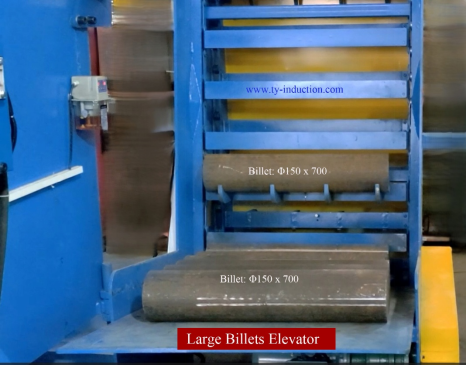
Automation in the automotive industry isn’t new, but the rise of electrification, lightweighting, and precision engineering has raised the bar for component performance. Manual processes—especially in heat treatment—struggle to keep pace with these evolving requirements. Key challenges with manual or semi-automatic systems include:
· Inconsistent heating due to operator variability
· High defect rates in brazed or hardened joints
· Increased rework and scrap
· Slower throughput
· High labor costs and operator fatigue
· Difficulty complying with strict environmental and safety regulations
As a result, many parts manufacturers are turning to induction heating solutions to improve control, reduce human error, and streamline workflows.
Induction heating is a non-contact method of heating electrically conductive materials—typically steel, aluminum, or copper—by generating eddy currents using electromagnetic fields. The process is fast, localized, and highly controllable, making it ideal for:
· Surface and through hardening of shafts, rods, and gears
· Brazing joints in copper/aluminum tubing systems
· Preheating before forming or forging
· Seam or edge heating in tubes and pipes
· Precise heat zones in multi-material assemblies
What sets induction apart in an automated environment is its ability to deliver heat exactly where it’s needed, when it’s needed—every time.
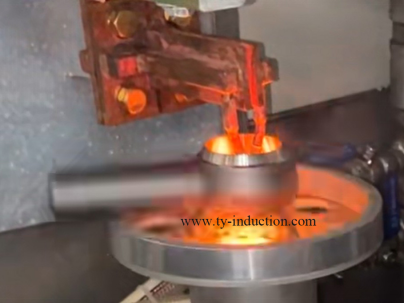
Transitioning from manual processes to automated induction systems brings several transformative benefits:
Consistency and Repeatability
Automated induction systems provide tight control over heating parameters such as temperature, dwell time, and power levels. This consistency:
· Reduces defect rates
· Ensures uniform metallurgical properties
· Meets strict automotive tolerance requirements
Increased Throughput
Cycle times for induction processes are often 50–80% faster than traditional methods. Coupled with robotic part handling, plants can double or triple their daily output.
Energy Efficiency
Induction heating is up to 90% energy-efficient, especially when compared to gas or resistance-based systems. Smart power supplies also allow energy optimization based on load demand.
Improved Safety and Cleanliness
By eliminating open flames, hot surfaces, and toxic fumes, induction automation makes the plant safer and cleaner. This is especially important for facilities aiming for ISO 45001 or ISO 14001 certifications.
Reduced Labor Dependence
In an era of labor shortages and rising wages, automated induction systems reduce the need for highly skilled heat treatment technicians. Operators can focus on system oversight rather than manual execution.
Induction equipment is now used extensively across multiple process stages in the automotive supply chain:
Axle Housing Induction Forming
High-frequency induction heat is applied before hydraulic forming, allowing for fast, uniform expansion and shaping with minimal material stress.
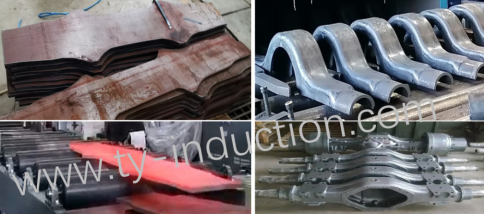
Rod and Bar Induction Hardening
Camshafts, crankshafts, steering racks, and torsion bars benefit from uniform surface hardening without affecting the core.
Chain Induction Hardening and Tempering Lines
Critical in mining, anchor and lifting chains, induction Hardening and Tempering process ensures wear resistance with minimal distortion.
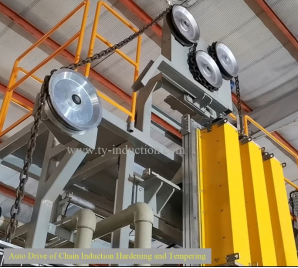
Tube and Pipe Bending
Induction bending eliminates the need for filler material or internal mandrels. It's faster and results in cleaner, smoother bends—ideal for cooling and exhaust systems.
Induction Brazing of Aluminum or Copper
Used in thermal management components, HVAC assemblies, and EV battery cooling systems. Automation enables multiple joints to be brazed in a single cycle with consistent flow and alignment.
The upgrade journey typically involves several key steps:
Assessment & Planning
Evaluate current cycle times, quality issues, and scrap rates. Determine which components or joints suffer most from manual variation.
Proof of Concept
Use sample parts to test different induction coil designs, power levels, and cycle times. Heat simulations or sample brazing/hardening tests are critical.
Pilot Line Installation
Begin with a single induction system and manual loading to validate process repeatability and part quality. Capture data and fine-tune process settings.
Integrate Automation
Add robotic arms, conveyors, and sensors for loading/unloading. Use PLCs or HMI software for process control, recipe storage, and diagnostics.
Scale Up
Deploy across other lines or plants, integrating MES/ERP systems to track performance, uptime, and energy use.
For auto parts plants in Europe, the move to automation is also driven by regulatory compliance, such as:
EU Green Deal energy mandates
· Worker health and safety directives
· CE marking and machine directives
· Environmental impact goals (carbon neutrality)
Additionally, European buyers value:
· CE-certified machines
· Local or remote support
· Documentation in local languages
· Custom coil and fixture design for complex part shapes
Despite the advantages, upgrading to automated induction systems can present challenges:
· Initial capital expenditure may be high
· Customization is often needed for each part geometry
· Operator retraining and skill upgrades are required
· Integration with existing lines takes time and planning
However, most plants find that ROI is achieved in 12–24 months, especially when factoring in scrap reduction, energy savings, and labor cost reduction.
The next generation of induction systems will integrate AI-based heating algorithms, cloud-based monitoring, and predictive maintenance. Expect real-time temperature mapping, self-adjusting power levels, and full traceability from raw part to finished product.
As automotive parts continue to evolve—especially with the rise of electric vehicles and lightweight materials—flexible and intelligent induction systems will become a core part of manufacturing success.
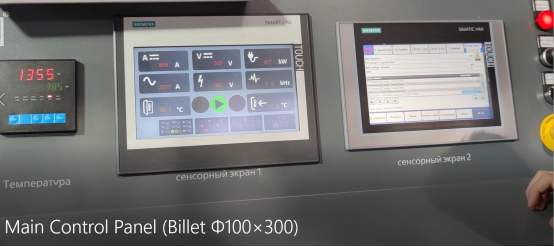
Upgrading from manual to fully automated induction equipment isn’t just a technological upgrade—it’s a strategic move that aligns auto parts plants with the demands of modern vehicle production. The switch brings better efficiency, precision, quality control, and competitiveness.
At TY INDUCTION, we help automotive parts manufacturers transition smoothly from manual to automated heating solutions. Whether you're looking to improve brazing precision, accelerate hardening cycles, or reduce energy costs, we provide customized induction systems that match your parts, processes, and production goals.
Faster cycles. Fewer defects. Smarter automation.
Let TY INDUCTION power your production.
Contact us today for a free consultation or part testing.
Hot Products
Contact Us
Enquiry hotline:
+86 135 4128 7190
Email:
Address:
No.18,14th Floor, Building 2, No. 169 Zhongli Road, Banzhuyuan Subdistrict, Xindu District, Chengdu, Sichuan, China, Code:610000
